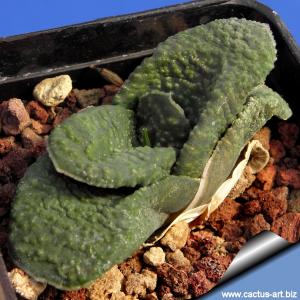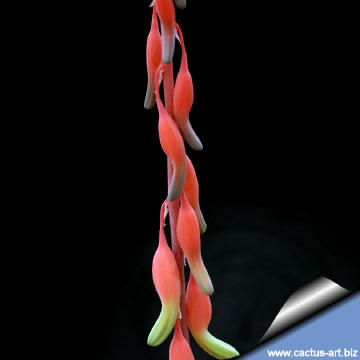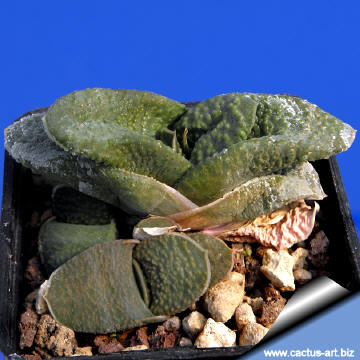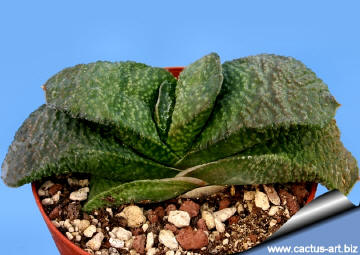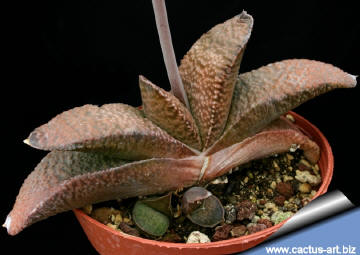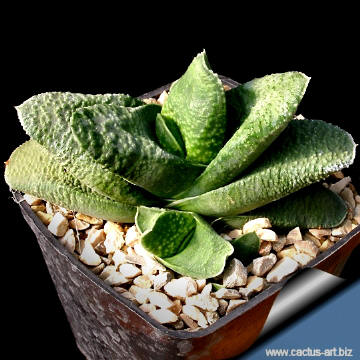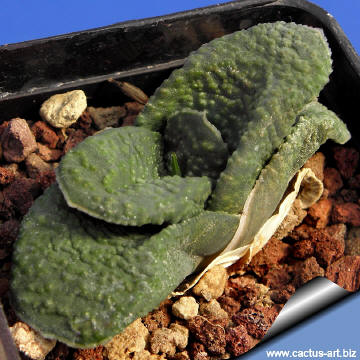-
x
Descrizione
|
La Gasteria armstrongiiè una delle specie a crescita più lenta e rare. Ha foglie verde scuro, corte, compatte e arrotondate di aspetto caratteristico quasi rettiliano, per via dell'epidermide riperta da tubercoli chiari. Family: Asphodelaceae Scientific name: Gasteria armstrongii Schönland 1912 Origin: Restricted to a comparatively limited coastal region mainly in and around Humansdorp, Eastern Cape Province. Taxonomy: Gasteria armstrongii has for a long time been just considered a "kind" of nitida (G. nitida var. armstrongii) but it is very different indeed from the typical G. nitida. Nowadays the taxonomist Ernst van Jaarsveld has decided, by virtue of DNA studies, that armstrongii is a species in its own right. Seedlings of G. nitida appear much the same until they produce erect pointed leaves Synonyms: Synonyms: Gasteria nitida var. armstrongii (Schönland) Van Jaarsvel Common English Names include: Cow Tongu 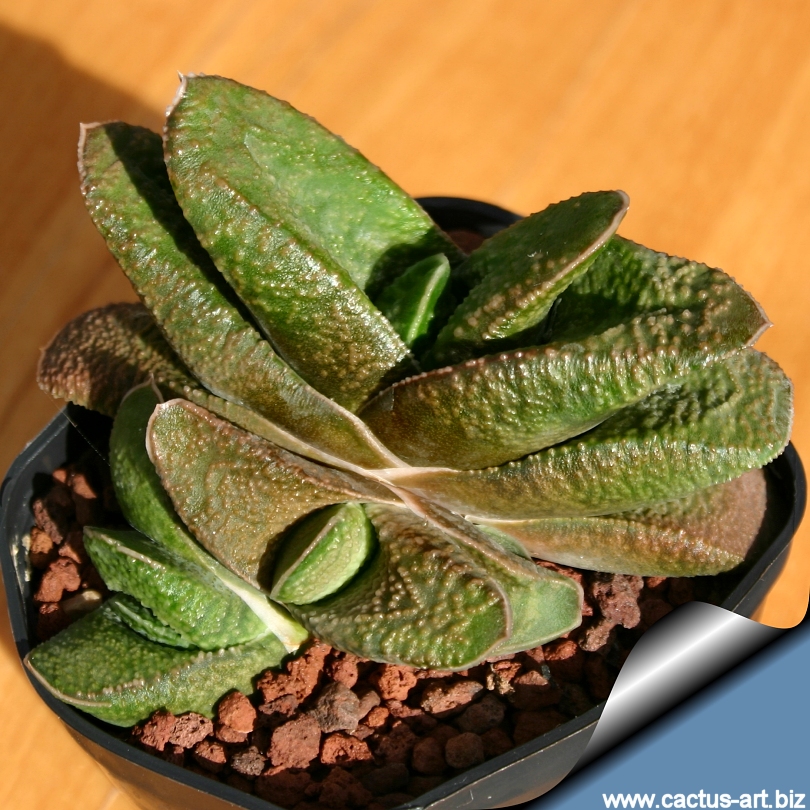 Gasteria armstrongii is one of the slow growing and rarer Gasterias with dark green leaves. Gasteria armstrongii is one of the slow growing and rarer Gasterias with dark green leaves. It contains some of the most handsome individual clones of any species.
|
|
|
Description: G. armstrogii is a distinctive neotenic miniature succulent with short, rounded and thick distichous rosettes of two to four leaves up to 10 in diameter. Old specimens cluster naturally with new plants around the original. It is very slow growing. |
|
|
Cultivation: They are slow growing but long-lived plants of easy culture which makes them a good houseplant and can be an excellent subject for the beginning gasteriaphile (it can grow easily on window sills, verandas and in miniature succulent gardens where they are happy to share their habitat with other smaller succulent plants, or in outdoor rockeries) Need light shade to shade, but will take full sun part of the day. (with some sun exposure the leaf develops a nice reddish tint and remain compact) They are tolerant of a wide range of soils and habitats, but prefer a very porous potting mix to increase drainage. During the hot summer months, the soil should be kept moist but not overly wet. The plants are fertilized only once during the growing season with a balanced fertilizer diluted to ½ the recommended strength. During the winter months, water only when the soil becomes completely dry. Frost hardy to -1°C (Or less). Propagation: Gasteria is easily propagated by the removal of offshoots or by leaf cuttings in spring or summer. To use offshoots It should stay intact in the post though every head will have its own root system and it could easily be split for propagation. |
|

